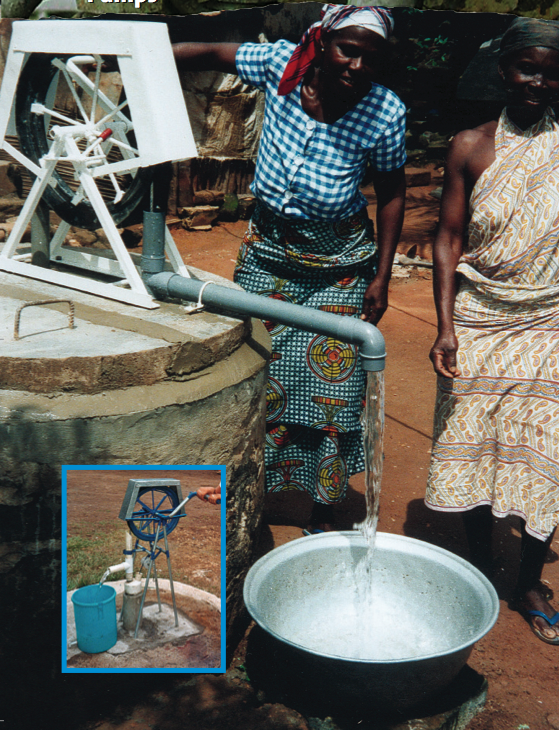Difference between revisions of "Rope pump"
(Removed duplication) |
|||
| Line 28: | Line 28: | ||
<ul> | <ul> | ||
<li><b>Numbers:</b> 50,000 in Nicaragua, 20,000 in Mexico, Honduras, Guatemala, Ghana, Zimbabwe, Tanaznia, Senegal.</li> | <li><b>Numbers:</b> 50,000 in Nicaragua, 20,000 in Mexico, Honduras, Guatemala, Ghana, Zimbabwe, Tanaznia, Senegal.</li> | ||
| − | |||
<li><b>Range of depth:</b> 1-35 meter (60 m with two cranks).</li> | <li><b>Range of depth:</b> 1-35 meter (60 m with two cranks).</li> | ||
<li><b>Application</b> Communal wells, houshold, irrigation. </li> | <li><b>Application</b> Communal wells, houshold, irrigation. </li> | ||
| − | |||
<li><b>Cost of introduction:</b> US$ 10,000-20,000 per project, including 20 pumps, engineering and hands-on training. US$ 60,000-100,000 per project, including 1,000 pumps, production workshop and hands-on training.</li> | <li><b>Cost of introduction:</b> US$ 10,000-20,000 per project, including 20 pumps, engineering and hands-on training. US$ 60,000-100,000 per project, including 1,000 pumps, production workshop and hands-on training.</li> | ||
</ul> | </ul> | ||
Revision as of 15:04, 17 July 2007
For wells down to 35 m, rope pumps are often 5 times cheaper and more Rotating movement (constant force 5-10 Kg.m) sustainable than piston pumps. Evaluations show that rope pumps on communal wells are being maintained by the users, if introduced properly. 90% Of rope pumps remain operational, even after many years. Continous water flow Because of its low cost, the pump is also popular for domestic use. (1-2 m/s) A survey among 5,025 rural families in Nicaragua indicates that a Schematic PVC pump tubes drawing of a rope pump increases income, even if used for domestic purposes (5-10 Kg) rope pump only. Families with a pump earn US$ 220 per year more than Low pressure in all parts families without a pump. In Nicaragua the pumps are now being (0, Kg/cm) produced commercially by 20 workshops. Few, non-corroDifferent models of Rope pumps were introduced in Africa.This sive pump parts introduction has not always been successful: in some projects over 80% of the pumps do NOT work! However, with the "right" models and the "right" user training, also 90 % remain in operation in Africa, as the Victory model in Ghana and the Elephant model in Zimbabwe have proved.
| Advantages | Disadvantages |
|---|---|
| Significantly cheaper than piston pumps. Easy to maintain. |
Not all introduction programs have been successful. |
Capacity
40 litres / min from 10 meters depth.
Costs
- US$ 20-120 depending on model.
Applying conditions
- Numbers: 50,000 in Nicaragua, 20,000 in Mexico, Honduras, Guatemala, Ghana, Zimbabwe, Tanaznia, Senegal.
- Range of depth: 1-35 meter (60 m with two cranks).
- Application Communal wells, houshold, irrigation.
- Cost of introduction: US$ 10,000-20,000 per project, including 20 pumps, engineering and hands-on training. US$ 60,000-100,000 per project, including 1,000 pumps, production workshop and hands-on training.
External links
- Evaluations www.irc.nl
- Africa www.pumpaid.org
- General info www.ropepump.com
- How to build www.ropepumps.org

